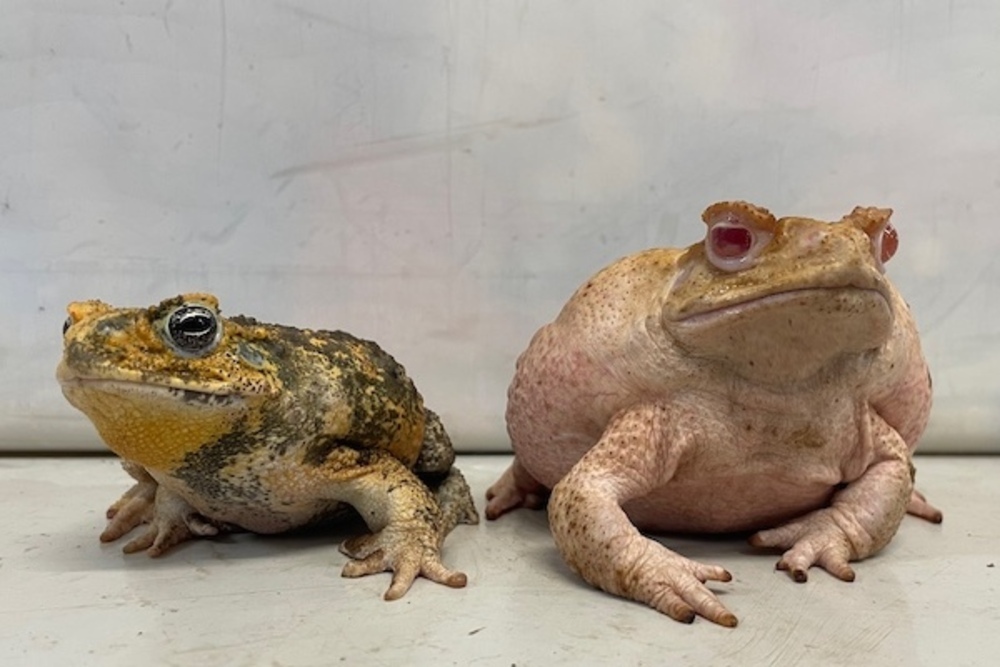
Gene-Edited Cane Toads Shed Light on Albinism
September 3, 2025| |
Experts from Macquarie University used CRISPR gene editing technology to uncover why albino animals are so rare in nature. The study, published in the Proceedings of the Royal Society B, used gene-edited albino cane toads to test long-standing theories about the evolutionary challenges of albinism.
The study found that albino toads struggled to compete even in controlled environments without predators. Albino tadpoles were less likely to survive and matured faster when living alongside pigmented siblings. As adults, they grew more slowly and had trouble catching prey. Further experiments showed that albino toads needed brighter light to hunt and frequently missed prey, making survival difficult in their natural nocturnal habitats.
The study highlights the power of gene editing to answer evolutionary questions that have long been difficult to test. “By knocking out just one gene, we can directly compare siblings from the same parents, with pigmentation as the only difference,” explained Professor Rick Shine. The team says the findings not only challenge assumptions about albinism but also demonstrate how CRISPR can be used to explore other evolutionary puzzles and potentially inform invasive species control.
For more information, read the article from Macquarie University.
| |
You might also like:
- Albino Rice Reveals Key Gene for Chlorophyll Production and Chloroplast Development in Rice
- What is the Difference Between Genetic Engineering and Gene Editing?
- Can We Save Endangered Species with Gene Editing?
Biotech Updates is a weekly newsletter of ISAAA, a not-for-profit organization. It is distributed for free to over 22,000 subscribers worldwide to inform them about the key developments in biosciences, especially in biotechnology. Your support will help us in our mission to feed the world with knowledge. You can help by donating as little as $10.
-
See more articles:
-
Plant
- AI Uncovers Key to Sustaining Rice Yields for Billions Around the World
- CRISPR Reverses Detrimental Effects of Natural Mutation in Rice Gene
- Experts Develop Optimized Transformation Systems for Local Rice Varieties
- High Seed Costs and Consumer Resistance Impede GM Maize Adoption in Ghana
-
Animal
- Gene-Edited Cane Toads Shed Light on Albinism
-
Food
- Scientists Use CRISPR to Create More Resilient Raspberries
- Study Finds Price and Shelf Life Drive Consumer Demand for GM Foods in South Africa
-
Environment
- Sunlight-Recharged Glow-in-the-dark Succulents New Way to Plant-based Lighting Systems
-
Read the latest: - Biotech Updates (December 17, 2025)
- Gene Editing Supplement (December 17, 2025)
- Gene Drive Supplement (February 22, 2023)
-
Subscribe to BU: - Share
- Tweet

